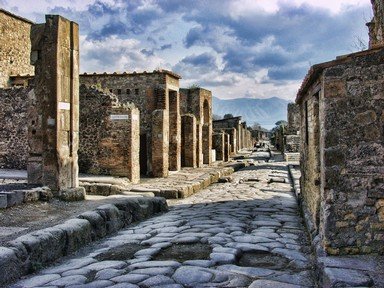Quiz Answer Key and Fun Facts
1. Where was the main center of public life in Pompeii?
2. Who else was worshiped at the Pompeian Temple of Jupiter?
3. Public bathing in Pompeii's cold springs was widely recognized as a public co-ed event.
4. One type of art very popular in Pompeii involved painting murals and stories directly onto the walls. What is a more common name for this?
5. The House of Faun is one of the better known excavated homes. From where does the house's name derive?
6. For what reason were there raised pavers placed in intervals across the roadways?
7. The Basilica was another very busy place in Pompeii. What was its purpose?
8. Bakeries, shoemakers, blacksmiths, washerwomen, brothels, and carpenters are all occupations that set up shop in Pompeii.
9. The priestess, Eumachia, had a large building erected at her own expense. What was its function?
10. A considerable amount of gladiator's armor has been excavated from Pompeii. How is it different from other gladiator armor?
Source: Author
myrab51
This quiz was reviewed by FunTrivia editor
bloomsby before going online.
Any errors found in FunTrivia content are routinely corrected through our feedback system.

